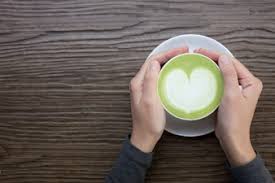About Matcha Tea

Matcha is finely ground powder of specially grown and processed green tea leaves. It is special in two aspects of farming and processing: The tea bushes designated for matcha are shade-grown for about three weeks before harvest and the stems and veins are removed in processing. During shaded growth, the plant Camellia sinensis produces more theanine and caffeine. The powdered form of matcha is consumed differently from tea leaves or tea bags. and is dissolved in a liquid, typically water or milk.

The traditional Japanese Ceremony centers on the preparation, serving, and drinking of matcha as hot tea and embodies a meditative spiritual style. In modern times, matcha also has come to be used to flavor and dye foods such as mochi and soba noodles, green tea ice cream, matcha lattes, and a variety of Japanese wagashi confectionery. Matcha used in ceremonies is referred to as ceremonial-grade matcha, meaning that the matcha powder is of a high enough quality to be used in the tea ceremony. Lower quality matcha is referred to as culinary-grade matcha, but there is no standard industry definition or requirements for either.

